Lewis Structure
What is Lewis Structure
Lewis structure, also known as Lewis dot structure or electron dot structure, is a simple and straightforward way of representing the outermost electron shell in a chemical species like an atom, ion, or molecule. It shows how electrons are positioned around the atoms either as lone pairs or in a chemical bond, typically a covalent bond or a coordinate covalent bond. Dots represent the lone pairs of electrons, and lines represent the bonded electrons. Since an ion has a charge, the charge is placed as a superscript [1-4].
Lewis structure is named after American chemist Gilbert Lewis. In 1916, he introduced valence bond theory, dot structures, and dashed lines to represent chemical bonds.
Lewis Structure and Octet Rule
The octet rule is used to draw the Lewis structure of a compound. This rule applies to the outmost shell of an atom, which is also known as the valence shell. The electrons in the valence shell are known as valence electrons. The number of valence electrons of an element can be determined from the periodic table.
All atoms gain or lose valence electrons to achieve a stable state, i.e., a state with the lowest potential energy. Therefore, atoms tend to have the desired number of electrons in their outermost shell that will enable them to achieve stability. By losing or gaining electrons, atoms take the electronic configuration of their neighboring inert gas atoms. Except for helium, which has 2 electrons, all inert gases have 8 electrons in their outermost shells. This rule that allows atoms to have up to 8 electrons in their valence shell is the octet rule [2-3].
How to Draw Lewis Structure
Parts of a Lewis Structure
A Lewis structure consists of the following parts [4].
1. Element symbol
2. Dots representing the lone pairs
The element symbol, together with the dots, is called the Lewis symbol.
3. Lines indicating chemical bonds – single line for a single or sigma bond, double line for a double bond (one sigma bond and one pi bond), and triple line for a triple bond (one sigma bond and two pi bonds)
4. Brackets around the molecule with a charge placed as a superscript (This point applies only to charged particles)
Lewis Structure of Nitrate Ion (NO3 –)
Let us take the example of the covalent compound nitrate ion (NO3–) and learn the steps and rules for drawing the Lewis structure of this polyatomic ion [4-9].
Step 1: We start by calculating the total number of valence electrons using the periodic table. First, find this number for each atom of the molecule. Then, add the individual numbers. Finally, to this number, add the electrons coming from the charge of the molecule. The number of valence electrons of the atoms in NO3– is as follows.
Nitrogen (N): 5
Oxygen (O): 6 x 3 = 18
Negative charge (-): 1
Total number of valence electrons: 5 + 18 + 1 = 24
Step 2: Next, we draw the skeleton structure of the molecule by connecting the central atom to other atoms by single lines. The central atom is the one with the maximum number of bonding sites. From step 1, we found that nitrogen has 5 electrons and requires 3 more to complete the octet. On the other hand, oxygen has 6 electrons and requires 2 more. Hence, nitrogen with more bonding possibilities is the central atom.
Step 3: Next, we will determine the number of electrons needed to complete the octet of each atom. Since each chemical bond comprises 2 electrons, 6 of the 24 electrons will occupy the three bonds in the skeleton. The remaining 18 electrons will go to the terminal atoms, which are the oxygen atoms. These non-bonding electrons are lone pairs.
Step 4: Next, we will check if all the octets are filled or not. If they are not, use a lone pair from one of the terminal atoms and form a bonding pair. In this case, one oxygen atom will donate its lone pair to the nitrogen and form a double bond.
Step 5: Next, we calculate the formal charge of each atom. The following formula gives the formal charge.
qf = V – N – B/2
where,
qf: Formal charge
V: Number of valence electrons of the atom
N: Number of non-bonding electrons or lone pairs
B: Total number of electrons shared in bonds with other atoms
Using the formula, the formal charges of nitrogen and oxygen atoms are as follows.
Oxygen
Atoms with single bonds: 6 – 6 – 2/2 = -1
The atom with a double bond: 6 – 4 – 4/2 = 0
Nitrogen
Only nitrogen atom: 5 – 0 – 8/2 = +1
Add all the formal charges to obtain the formal charge of the molecule.
-1 + (-1) + 0 + 1 = -1
Hence, the net charge on the nitrate ion is -1.
Step 6: In step 5, we have seen the Lewis structure of the nitrate ion. However, this is not the simplest form. To show the simplest Lewis structure, draw a bracket around the molecule and indicate the overall charge as a superscript.
The following image summarizes the above steps.
Lewis Structures of Covalent Compounds and Ions
The above image shows the Lewis structures of some common covalent compounds and ions.
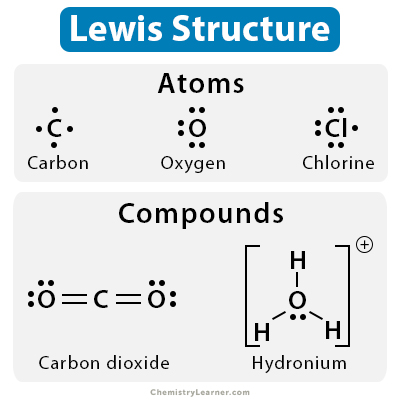

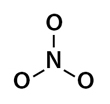
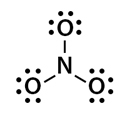
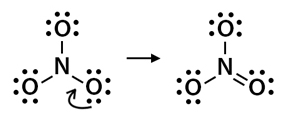
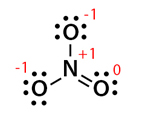
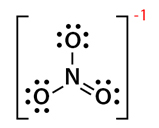
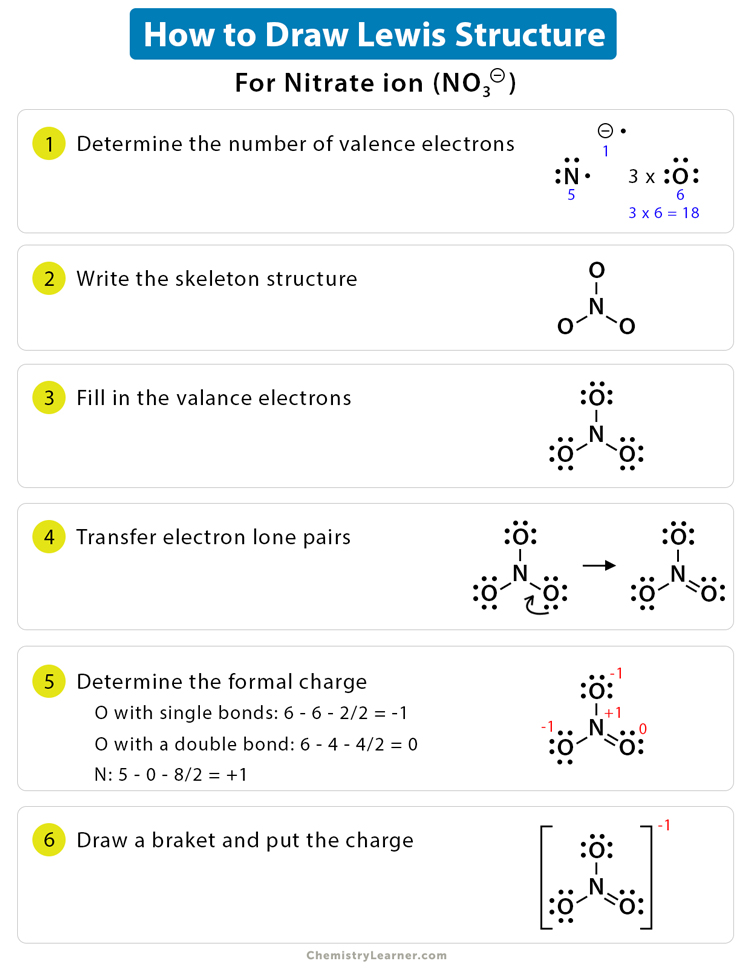
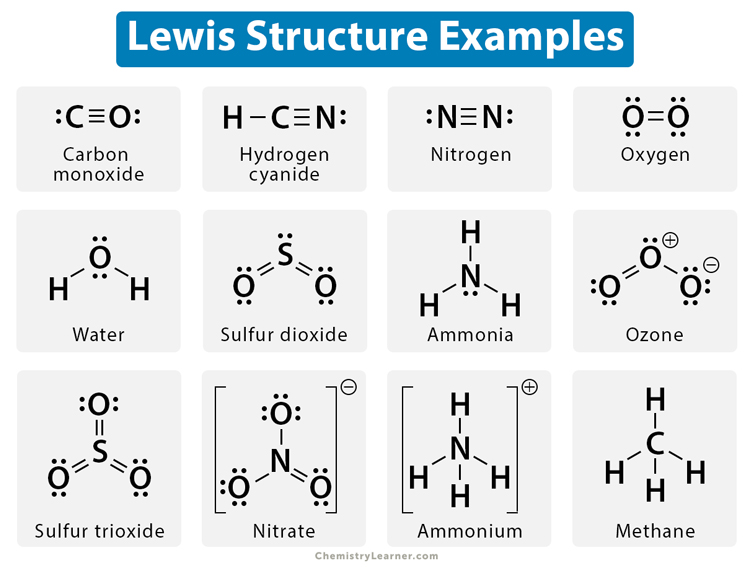





It was very nice topic for me to understand the difference between Lewis structure and Lewis compound
Great note,I was able to understand the Lewis structure and octet rule.continue providing education thank you.